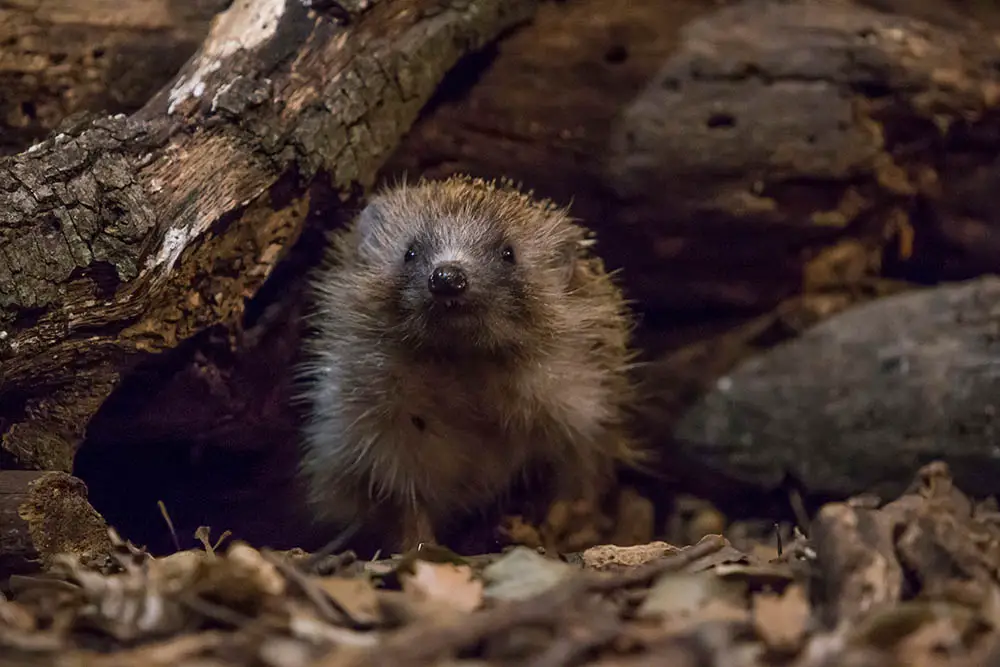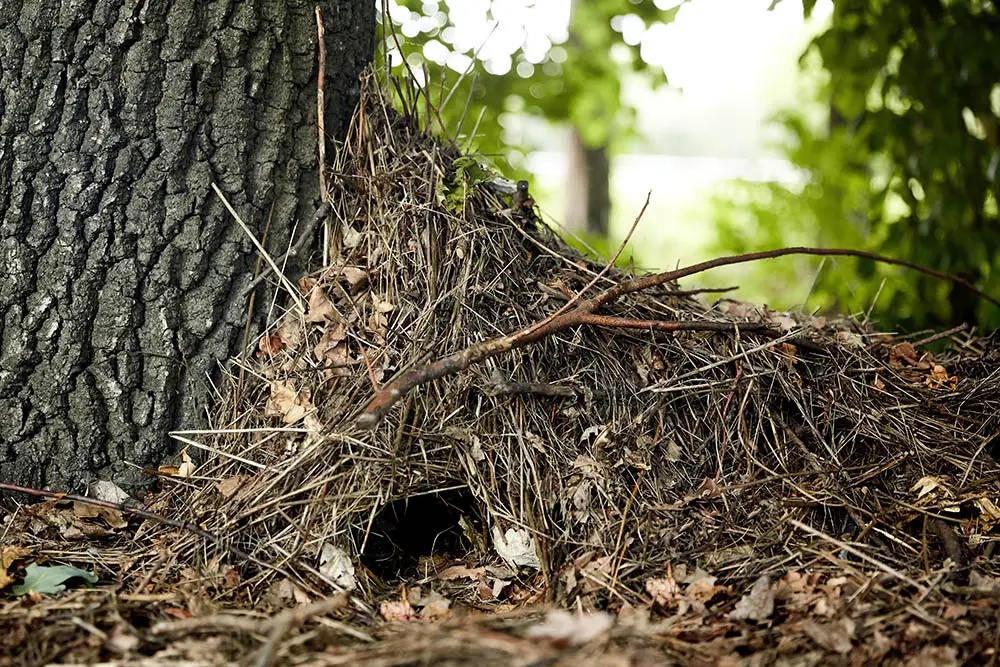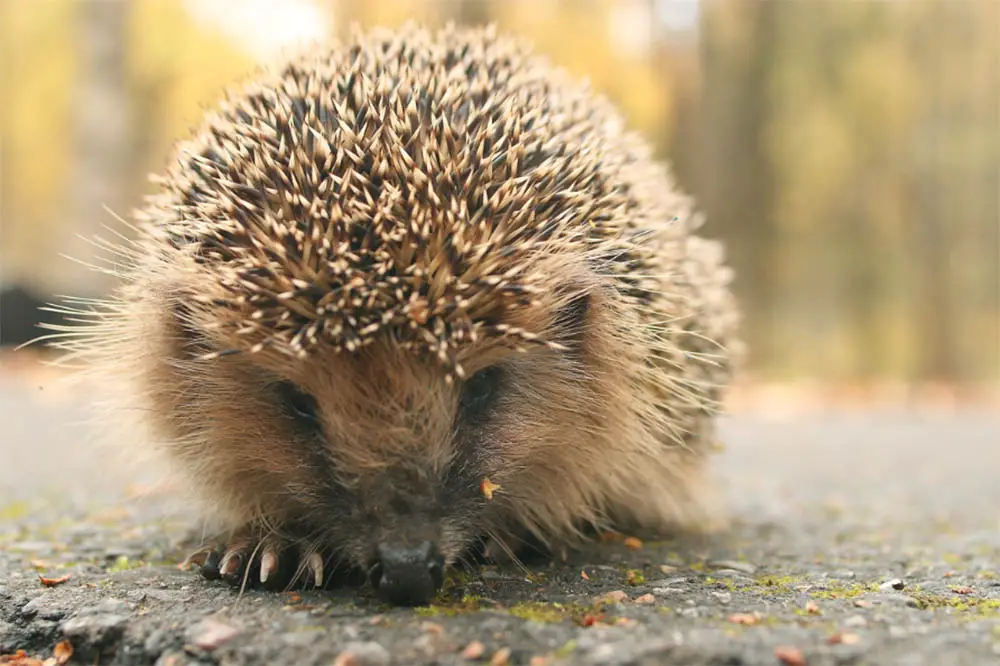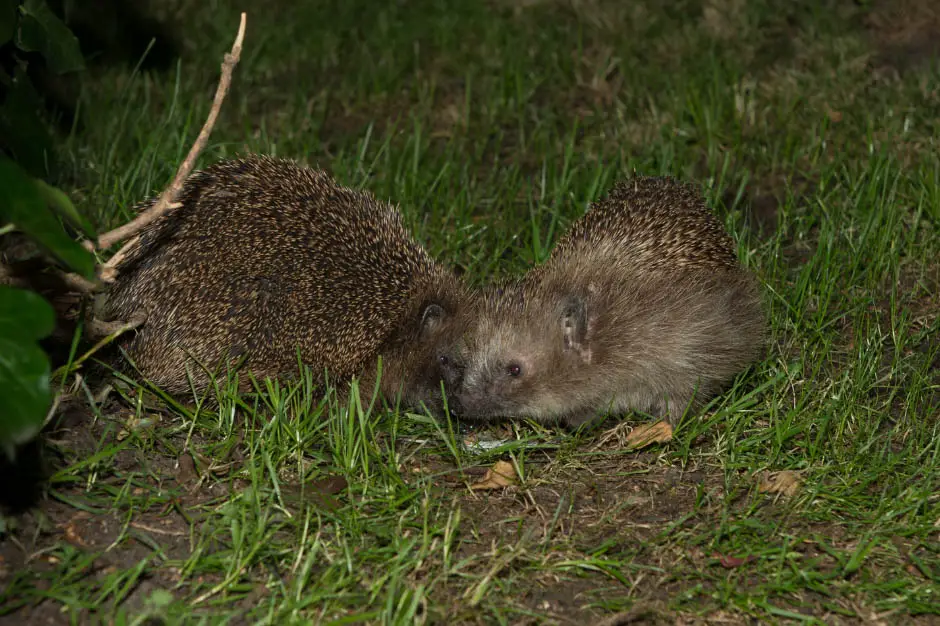Whether you are curious about wild hedgehogs or captive ones, we can tell you that both these types of hedgehog burrow. Burrowing is natural behavior for hedgehogs.
Wild hedgehogs will use a combination of burrowing and nest building, which they do will depend on the climate and the time of year.

Captive hedgehogs on the other hand will often try to burrow underneath their cage bedding, this is why it is important to provide them with plenty of bedding.
Today we will cover everything that you need to and want to know about hedgehog burrows, including finding out if all hedgehogs burrow, when they do so, how big they are, and more.
Hedgehogs are found in many places throughout the world, while in different places they will act slightly differently, they all have the same key survival instincts such as burrowing.
Do all hedgehogs burrow?
Do all hedgehogs burrow? Wild and captive? Well, yes, this is natural and instinctive behavior for hedgehogs. Many experts will point this out and suggest that burrows are typically used for both hiding in, and sleeping in.
Hedgehogs can actually sleep up to 18 hours a day, so if you think cats are lazy with their average 16 hours of sleep and naps, hedgehogs have definitely one-upped them there.
They keep a burrow that will be safe for them to sleep in, where their predators cannot get to them, allowing them to sleep soundly and safely.
There are a wide variety of factors that will determine when, where, and how often a hedgehog burrows.
But, do all wild hedgehogs burrow? Not all of them, it depends on the hedgehog and the climate that they live in.
Some wild hedgehogs will opt to build a nest instead. From the age of only three weeks old, hoglets will start learning how to build a nest, and within only a few weeks they can be considered to be experts in the field.
Hedgehog nests are usually made of a mixture of branches, grass, and dry leaves. They will generally look a bit tatty and thrown together in their construction, but rest assured it is organized chaos that is perfect for a hedgehog.
Depending on the climate, the time of year, and the individual hedgehog, some may decide to occasionally opt for nest building, and then switch things up and do some burrowing for a change.
In places such as Africa, hedgehogs there have been known to hide between rocks to keep safe when they have no other options. It really does vary.
When do hedgehogs start to burrow?
Hedgehogs may actually burrow more at specific times of the year.
Hedgehogs will tend to big into the soil to create a borrow, and build a hibernaculum, which is a place in which they hibernate for the winter, in the fall months before winter sets in, this will protect them from frost and other adverse weather conditions that typically come with winters.
This means that during the warmer summer months, hedgehogs will be more likely found in nests, and then they will be more likely found in burrows when temperatures drop and winter arrives.

They do this because it is important that they keep their body temperatures around 34 to 39 Fahrenheit during the time that they hibernate. Nests do not provide the insulation that they need to get this heat during the winter, and so burrowing is the better option.
In the majority of Europe, hedgehogs will hibernate between November and March, and so if you wanted to go looking for hedgehog burrows, this is the most common time that you would see them.
It is also worth knowing that they may choose to burrow out of this time frame as well, if the weather is not warm enough for a nest to suffice, they will choose to burrow for warmth.
Where can hedgehog burrows be found?
Hedgehogs can be found to burrow in a wide variety of places, they are also happy to steal the burrows of other animals such as rabbits, if a burrow isn’t occupied they’ll probably sneak in and call it home for a few days.
Hedgehogs can burrow under trees, and this is probably the most likely place for you to see a hedgehog burrow, they like trees, and the stumps will provide extra protection.
Hedgehogs may also burrow under sheds or other wooden structures, they love to burrow under here. In fact, in winter months, if you have a wooden home, hedgehogs may burrow under here, as they will gather extra warmth from the energy in your home. Perfection!
Hedgehogs will also likely burrow in compost heaps, they make for great living spaces in the winter, and since the compost will not be as densely packed as the earth and soil of a forest or grassland floor is, it is also easier to dig out of when winter is over.
How big are hedgehog burrows?
There is no definite answer to how big the burrows are, however it is believed that they can reach up to half a meter in depth, sometimes even three quarters of a meter in depth.
Burrows do not have sharp drops either, they are usually gentle slopes that go downward. There is no actual dimension to how wide these burrows can be, but the best guess is big enough for an adult hedgehog to fit down.
It is also important to remember that hedgehogs do not often dig their own holes either. They are a bit opportunistic when it comes to seeking accommodation.
Hedgehogs do not stay in one burrow for long outside of hibernation, so they may stay in abandoned fox holes, or rabbit holes.
In places like Africa, hedgehogs will use the burrowing holes of turtles, gerbils, and foxes. In Europe, they will use the holes of rabbits, foxes and more.
This means that it is easy to be confused about what animal dug the hole you are looking at and if there is a hedgehog in there, or something else.









